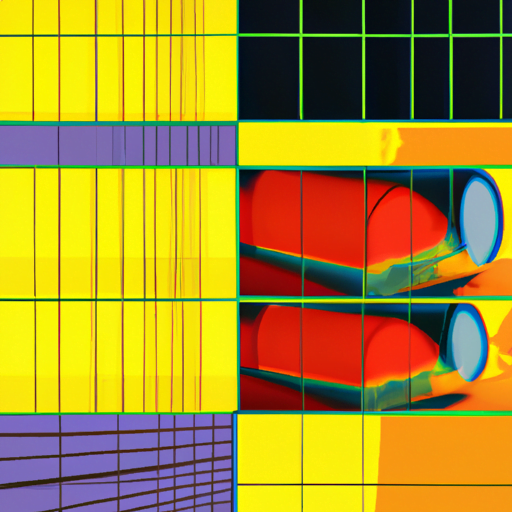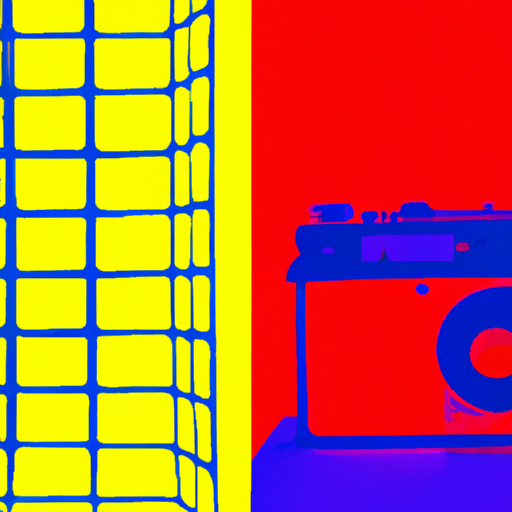
-
Table of Contents
- Playing with Optical Illusions in Design
- The Power of Optical Illusions
- Engaging the Viewer
- Creating Depth and Dimension
- Examples of Optical Illusions in Design
- The FedEx Logo
- The Impossible Penrose Triangle
- Case Studies: The Impact of Optical Illusions in Design
- The “Got Milk?” Campaign
- The “Lego Illusion” by Dante Dentoni
- Conclusion
Playing with Optical Illusions in Design

Optical illusions have long fascinated and captivated people’s minds. These visual tricks challenge our perception and create a sense of wonder. In the world of design, optical illusions can be used to create captivating and engaging experiences. By manipulating visual elements, designers can play with our perception and create unique and memorable designs. In this article, we will explore the concept of optical illusions in design and how they can be effectively utilized.
The Power of Optical Illusions
Optical illusions have a profound impact on our brains. They exploit the way our visual system processes information, leading to perceptual distortions. By understanding the principles behind optical illusions, designers can leverage these effects to create visually stunning and attention-grabbing designs.
Engaging the Viewer
One of the key benefits of using optical illusions in design is their ability to engage the viewer. When presented with an optical illusion, our brains are immediately drawn to decipher the hidden message or figure. This engagement creates a sense of curiosity and captivates the viewer’s attention.
For example, the famous “Rubin’s Vase” illusion presents an ambiguous image that can be interpreted as either a vase or two faces in profile. This illusion immediately captures the viewer’s attention and encourages them to explore the image further. By incorporating such illusions into design, designers can create a captivating experience that keeps the viewer engaged.
Creating Depth and Dimension
Optical illusions can also be used to create a sense of depth and dimension in two-dimensional designs. By employing techniques such as shading, perspective, and overlapping elements, designers can trick the viewer’s brain into perceiving depth where there is none.
For instance, the “Necker Cube” illusion presents a simple line drawing of a cube that can be perceived in two different orientations. This illusion tricks our brain into perceiving a three-dimensional object from a two-dimensional image. By incorporating similar techniques, designers can add depth and dimension to their designs, making them visually appealing and engaging.
Examples of Optical Illusions in Design
Now that we understand the power of optical illusions in design, let’s explore some real-world examples where designers have effectively utilized these techniques.
The FedEx Logo
The FedEx logo is a classic example of an optical illusion in design. At first glance, it appears to be a simple text-based logo. However, upon closer inspection, you can notice an arrow hidden between the letters “E” and “X.” This clever use of negative space creates an optical illusion that reinforces the company’s message of speed and efficiency in delivery.
The Impossible Penrose Triangle
The Penrose Triangle, also known as the “Impossible Triangle,” is a famous optical illusion that has been incorporated into various designs. This illusion presents a two-dimensional drawing of a triangle that appears to be a three-dimensional object. The impossible geometry challenges our perception and creates a visually intriguing design.
Case Studies: The Impact of Optical Illusions in Design
Several case studies have demonstrated the effectiveness of optical illusions in design. Let’s explore a couple of examples that highlight the impact of these techniques.
The “Got Milk?” Campaign
In 1993, the California Milk Processor Board launched the iconic “Got Milk?” campaign. One of the most memorable ads from this campaign featured a young boy wearing a Superman cape and a milk mustache. The optical illusion in this ad was the absence of a milk mustache on the boy’s face, which was cleverly hidden by the cape. This illusion created intrigue and encouraged viewers to think about the message behind the ad, ultimately leading to increased milk consumption.
The “Lego Illusion” by Dante Dentoni
Artist Dante Dentoni created a captivating optical illusion using Lego bricks. He designed a wall with seemingly random Lego pieces protruding from it. However, when viewed from a specific angle, the pieces align perfectly to create the illusion of a three-dimensional Lego figure. This installation not only engaged viewers but also encouraged them to interact with the artwork by finding the optimal viewing angle.
Conclusion
Optical illusions have the power to captivate and engage viewers in the world of design. By leveraging the principles behind these illusions, designers can create visually stunning and attention-grabbing designs. Whether it’s through engaging the viewer, creating depth and dimension, or incorporating clever illusions into logos and campaigns, optical illusions offer endless possibilities for designers to explore.
By understanding the impact of optical illusions and studying real-world examples and case studies, designers can unlock the full potential of these techniques. So, embrace the world of optical illusions in design and let your creativity play with perception.
